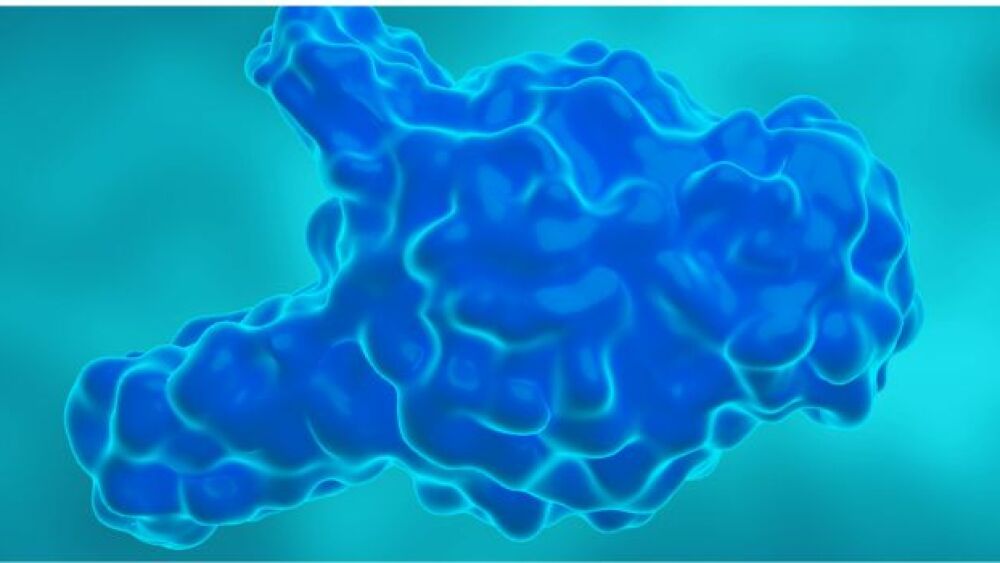SOUTH SAN FRANCISCO, Calif., May 17, 2016 /PRNewswire/ -- Veracyte, Inc. (NASDAQ: VCYT), a molecular diagnostics company pioneering the field of molecular cytology, announced that new data suggesting the ability of the company's Percepta Bronchial Genomic Classifier to significantly reduce unnecessary invasive procedures in lung cancer diagnosis were presented at the American Thoracic Society (ATS) 2016 International Conference being held May 13-18 in San Francisco. The presentation coincides with the clinical utility study's online publication in BMC Pulmonary Medicine.
In the new study, researchers evaluated how use of the Percepta classifier impacted physician decision-making for patients being evaluated for potentially cancerous lung nodules or lesions. Using patient cases from the two prospective, multicenter studies (AEGIS trials), they found that a "low risk" genomic test result prompted a three-fold reduction (from 57 percent to 18 percent) in invasive procedure recommendations, compared to when no genomic test results were available.
The findings are based on a survey of 202 pulmonologists who evaluated cases of 36 patients who were deemed "intermediate risk" for cancer before testing and had an inconclusive result on bronchoscopy, a common, nonsurgical procedure to assess potentially cancerous lung nodules and lesions. The Percepta classifier has previously been shown in multicenter, prospective studies to have high accuracy (>91 percent negative predictive value) when it identified lung nodules or lesions among this population as "low risk." i,ii
"When a patient with a suspicious lung nodule is left without answers after a bronchoscopy, physicians often recommend additional invasive testing to reduce the chances of missing a malignancy, even though we know that a significant fraction of the nodules we see are not cancer," said J. Scott Ferguson, M.D., associate professor of pulmonology and critical care at the University of Wisconsin, Madison, and lead author of the new study. "Our findings suggest that physicians will have confidence in the genomic test's results and will direct many of these patients to CT monitoring, rather than invasive procedures that are risky, costly and often unnecessary. Given that one and a half million incidental lung nodules are found each year and eight million Americans recently became eligible for annual lung cancer screening, the need for a better diagnostic tool in which patients and physicians can have confidence has become especially important."
An estimated 250,000 patients currently undergo a bronchoscopy for suspected lung cancer each year. Approximately 40 percent of bronchoscopies produce inconclusive results, which can lead to risky and expensive invasive procedures such as transthoracic needle biopsy (TTNB) and surgical lung biopsy (SLB). TTNB, for example, has a 15 to 25 percent risk of collapsed lung; SLB is estimated to cost more than $20,000.
In a second study presented at the ATS conference, researchers evaluated the cost-effectiveness of the Percepta classifier in lung cancer diagnosis, using a commonly accepted economic modeling framework. They found that use of the genomic test was cost-saving or cost-effective across a range of costs for the test because of its ability to reduce the number of unnecessary invasive surgeries and biopsies, procedure-related adverse events and their associated costs.
"Our findings suggest that use of the Percepta classifier provides clinical and economic value for patients undergoing evaluation for possible lung cancer," said David Feller-Kopman, M.D., associate professor of medicine at the Johns Hopkins School of Medicine, who presented the data. "This is important as lung cancer screening programs expand and payers consider use of the Percepta test to improve evaluation and management of lung nodules or lesions."
"Diagnostic ambiguity in lung cancer and the unnecessary invasive, risky and costly procedures that can follow put a tremendous strain on physicians, patients and the healthcare system," said Bonnie Anderson, president and chief executive officer of Veracyte. "These compelling new data add to the significant body of clinical evidence demonstrating the value that the Percepta classifier delivers by helping physicians know what to do next for their patients when current test results are uncertain."
In a third study presented at the conference, researchers demonstrated that use of the Percepta classifier could have decreased unnecessary, invasive procedures in 50 percent of evaluated patients. The clinical utility findings were based on analysis of data from the AEGIS studies. In a fourth study, Veracyte researchers presented analytical verification data for the Percepta classifier, demonstrating the test's strong accuracy, specificity, sensitivity and reproducibility under a range of conditions and variables. Findings from both studies were previously reported. iii,iv
About Percepta
The Percepta Bronchial Genomic Classifier is designed to identify patients with lung nodules who are at low risk of cancer following an inconclusive bronchoscopy result, to enable these patients to be safely monitored with CT scans in lieu of invasive diagnostic procedures. The 23-gene molecular classifier's performance is proven in clinical validation studies enrolling more than 1,000 patients, including strong data published in The New England Journal of Medicine. The classifier uses proprietary genomic technology to detect molecular changes that occur in the epithelial cells lining the lung's respiratory tract in current or former smokers with lung cancer. These changes can be detected in cells obtained from standard cytology brushings taken during bronchoscopy from the mainstem bronchus and indicate the presence of malignancy or disease processes from distant sites in the lung. Thus, the test is designed to determine a lung nodule's or lesion's likelihood of cancer, without the need to sample the nodule or lesion directly. The Percepta classifier is performed at Veracyte's CLIA-certified laboratory in South San Francisco, California.
About Veracyte
Veracyte (NASDAQ: VCYT) is pioneering the field of molecular cytology, offering genomic solutions that resolve diagnostic ambiguity and enable physicians to make more informed treatment decisions at an early stage in patient care. By improving preoperative diagnostic accuracy, the company aims to help patients avoid unnecessary invasive procedures while reducing healthcare costs. Veracyte's Afirma® Thyroid FNA Analysis centers on the proprietary Afirma Gene Expression Classifier (GEC) and is becoming a new standard of care in thyroid nodule assessment. The Afirma test is recommended in leading practice guidelines and is covered for 180 million lives in the United States, including through Medicare and many commercial insurance plans. Veracyte is expanding its molecular cytology franchise to other clinical areas, beginning with difficult-to-diagnose lung diseases. In April 2015, the company launched the Percepta Bronchial Genomic Classifier, a test to evaluate patients with lung nodules that are suspicious for cancer. In the fourth quarter of 2016, Veracyte plans to launch its second pulmonology product, the Envisia classifier, to improve diagnosis of interstitial lung diseases including idiopathic pulmonary fibrosis. For more information, please visit www.veracyte.com.
Cautionary Note Regarding Forward-Looking Statements
This press release contains "forward-looking statements" within the meaning of the Private Securities Litigation Reform Act of 1995. Forward-looking statements can be identified by words such as: "anticipate," "intend," "plan," "expect," "believe," "should," "may," "will" and similar references to future periods. Examples of forward-looking statements include, among others, statements we make regarding our beliefs regarding the drivers of adoption of Afirma, our expectations with respect to the success of our entry into the pulmonology market, our expectations regarding full-year 2016 guidance and forecast for annual GEC test volume, and the value and potential of our technology and research and development pipeline. Forward-looking statements are neither historical facts nor assurances of future performance. Instead, they are based only on our current beliefs, expectations and assumptions regarding the future of our business, future plans and strategies, anticipated events and trends, the economy and other future conditions. Forward-looking statements involve risks and uncertainties, which could cause actual results to differ materially, and reported results should not be considered as an indication of future performance. These risks and uncertainties include, but are not limited to: our limited operating history and history of losses; our ability to increase usage of and reimbursement for Afirma and to obtain reimbursement for any future products we may develop or sell; our ability to continue our momentum and growth; our dependence on a few payers for a significant portion of our revenue; the complexity, time and expense associated with billing and collecting from payers for our tests; laws and regulations applicable to our business, including potential regulation by the Food and Drug Administration or other regulatory bodies; our dependence on strategic relationships and our ability to successfully convert new accounts resulting from such relationships; our ability to develop and commercialize new products and the timing of commercialization; our ability to successfully achieve adoption of and reimbursement for our Percepta Bronchial Genomic Classifier; our ability to achieve sales penetration in complex commercial accounts; the occurrence and outcome of clinical studies; the timing and publication of study results; the applicability of clinical results to actual outcomes; our inclusion in clinical practice guidelines; the continued application of clinical guidelines to our products; our ability to compete; our ability to expand into international markets and achieve adoption of our tests in such markets; our ability to obtain capital when needed; and other risks set forth in the company's filings with the Securities and Exchange Commission, including the risks set forth in the company's Quarterly Report on Form 10-Q for the quarter ended March 31, 2016. These forward-looking statements speak only as of the date hereof and Veracyte specifically disclaims any obligation to update these forward-looking statements.
Veracyte, Afirma, Percepta, Envisia, the Veracyte logo, and the Afirma logo are trademarks of Veracyte, Inc.
i Silvestri GA, Vachani A, Whitney D, et al. A Bronchial Genomic Classifier for the Diagnostic Evaluation of Lung Cancer. N Engl J Med. 2015.
ii Whitney DH, Elashoff MR, Porta K, et al. Derivation of a bronchial genomic classifier for lung cancer in a prospective study of patients undergoing diagnostic bronchoscopy. BMC Medical Genomics. 2015, 8:18.
iii Vachani A, Whitney DH, Parsons ED, et al. Clinical Utility of a Bronchial Genomic Classifier in Patients with Suspected Lung Cancer. CHEST. 2016.
iv Hu Z, Whitney DH, Anderson JR, et al. Analytical Performance of a Bronchial Genomic Classifier. BMC Cancer. 2016, 16:161.
To view the original version on PR Newswire, visit:http://www.prnewswire.com/news-releases/new-data-suggesting-veracytes-percepta-bronchial-genomic-classifier-can-reduce-unnecessary-invasive-procedures-in-lung-cancer-diagnosis-presented-at-ats-2016-300270389.html
SOURCE Veracyte





